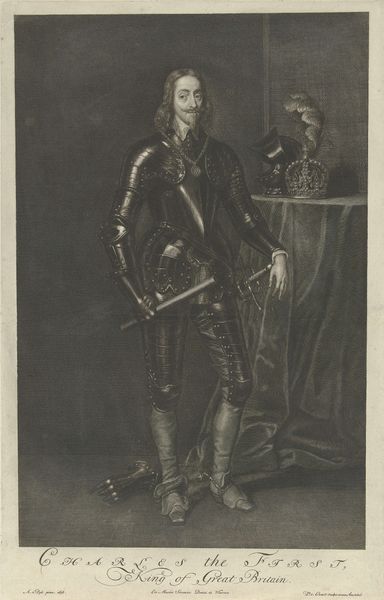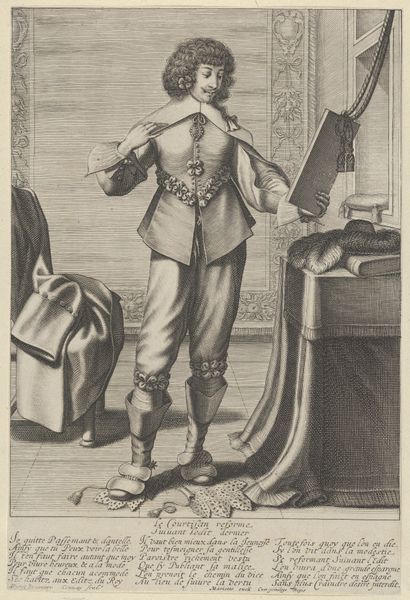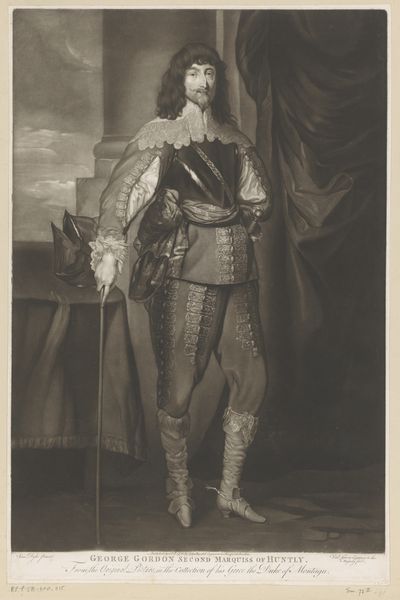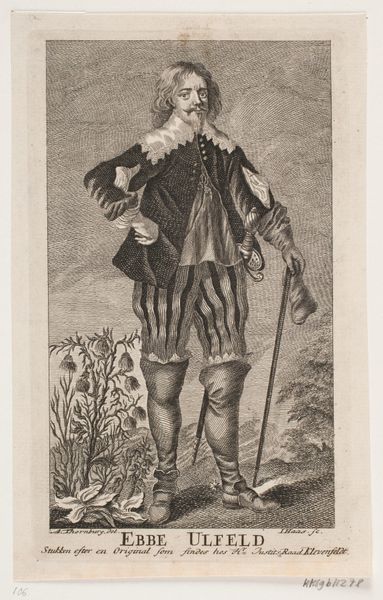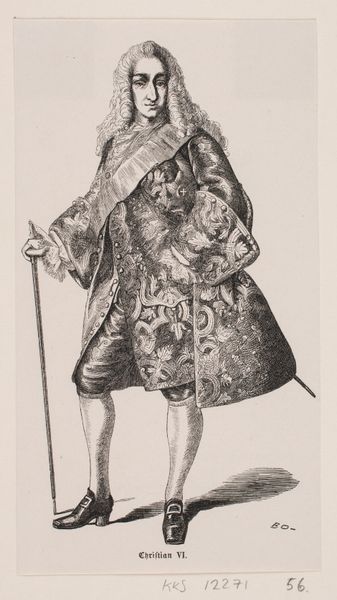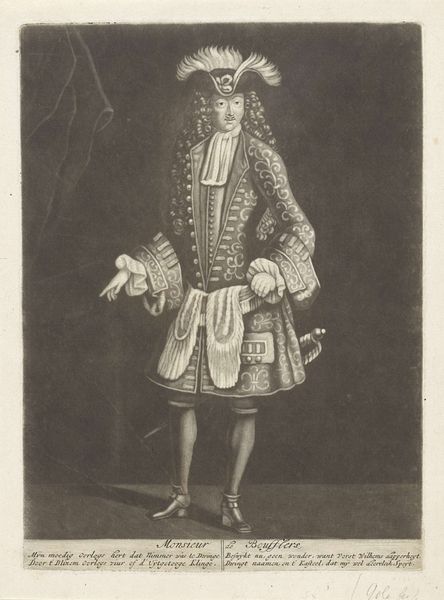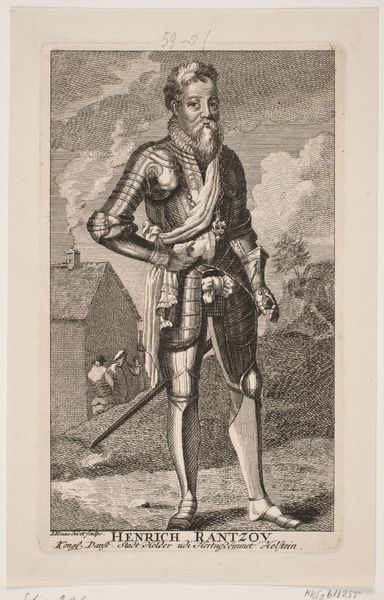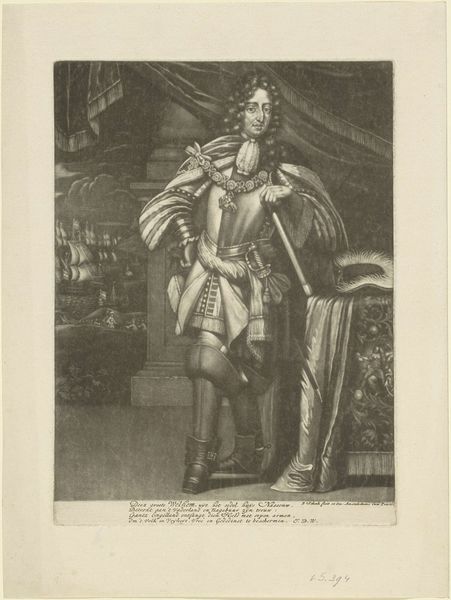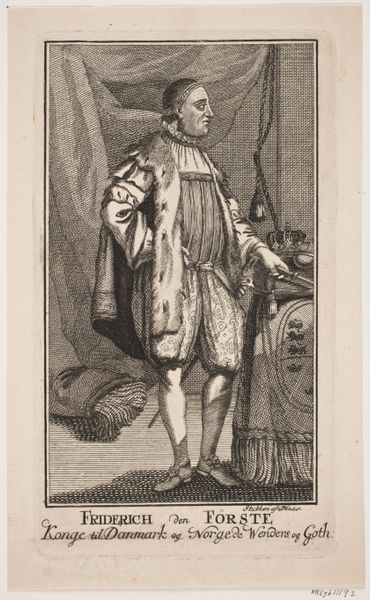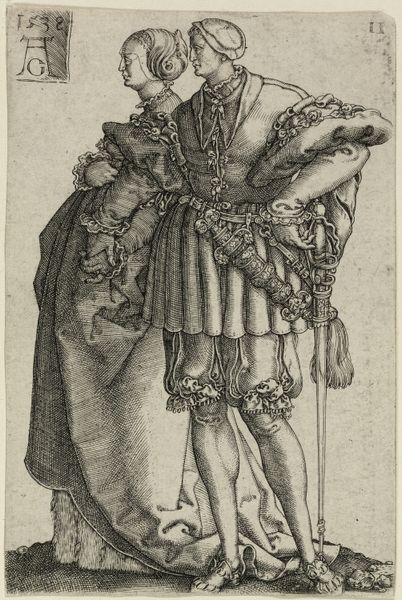
print, engraving
#
portrait
#
baroque
# print
#
old engraving style
#
history-painting
#
engraving
Dimensions: width 331 mm, height 513 mm
Copyright: Rijks Museum: Open Domain
Editor: So, here we have Pieter van Gunst’s 1716 engraving, “Portret van burggraaf Patrick Chaworth van Armagh,” housed in the Rijksmuseum. It's such a formal portrait. What stands out to me is how much detail there is despite being a print. I am wondering what story do you see this piece telling us? Curator: This portrait speaks volumes about the socio-political status conveyed through visual imagery in the early 18th century. Notice how the composition reinforces a sense of aristocratic power and stability. We must think of the engraving not just as an aesthetic object, but also as a mechanism for disseminating status. Think about the context of portraiture in this period - who were these images for, and what purpose did they serve in the broader culture? Editor: It's interesting to consider it as a piece of propaganda, not just art. I guess all that ornamentation, the armour, and the dramatic curtain in the back contribute to this image of power you mentioned. Did the patronage system play a role in producing art like this? Curator: Absolutely. The patronage system was integral. It funded these works but also dictated their content and style. The visibility conferred by art such as this could either consolidate or undermine elite networks and power. Consider what this image does not show, as much as what it does. Who is excluded from this narrative of power? Whose labor made such displays possible? Editor: That definitely gives me a lot to consider. Thanks for putting this engraving into that kind of historical context! Curator: Indeed. By considering how art circulates within social and political systems, we can begin to see its profound influence in shaping our understanding of the world.
Comments
No comments
Be the first to comment and join the conversation on the ultimate creative platform.

